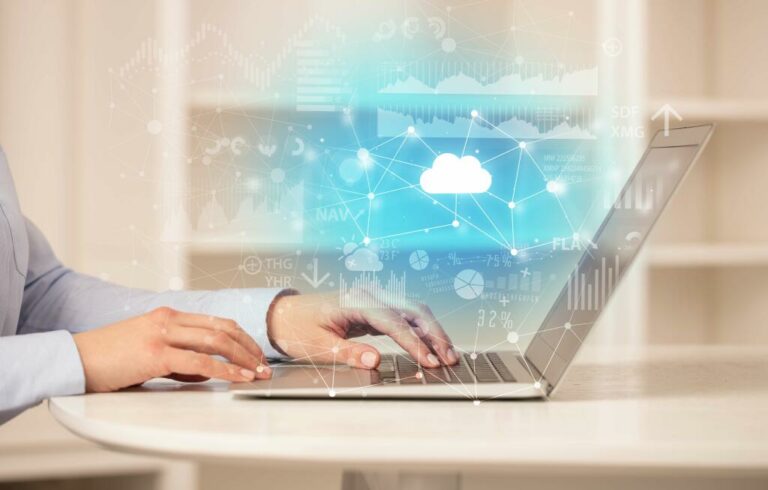How to explain edge computing in plain English
Content
‘The empowered edge’ is one of Gartner’s Top 10 Strategic Technology Trends for 2020, with manufacturing still being the essence of Industry 4.0, along with retail, already most active. Interconnection and data center company Equinix that cites the prediction for its ‘Top 5 Technology Trends to Impact the Digital Infrastructure Landscape in 2020’, adds that by 2024, the number of apps at the edge will increase 800 percent. Endpoints which include the devices on the edge of the network such as sensors and wearables. According to International Data Corporation , for instance, worldwide spending on edge computing will reach $250 Billion in 2024 , a compound annual growth rate of 12.5 percent over the 2019–2024 forecast period. There isn’t a single day that goes by without an article, paper, webinar, or even event on edge computing.
Typically organizations that rely on edge computing struggle with latency when transmitting data to a data center and need to process data locally in real time. Because a modern plant with 2,000 pieces of equipment can generate around 2,200 terabytes of data per month, it’s faster and cheaper to process all the data closer to the equipment, rather than first transmitting it to a remote data center. Edge computing complements cloud computing in a hybrid IT environment. While cloud computing leverages centralized data centers, edge computing leverages distributed micro data centers at the edge of the network where data is used closer to where it is generated. Computing tasks require good architecture, and an architecture that fits one type of computing task does not necessarily fit all types of computing tasks.

Fog Computing — Fog computing pushes intelligence down to the local area network level of network architecture, processing data in a fog node or IoT gateway. Retail and eCommerce applies various edge computing applications to improve and refine customer experience and gather more ground-level business intelligence. The emergence of IoT devices, self-driving cars, and the likes, opened the floodgates of various user data. IoT devices brought-in so much data that even seemingly boundless computing capabilities of the cloud were not enough to maintain an instantaneous process and timely results. This is bad news in the case of data-reliant devices such as self-driving cars.
What To Look For In An Edge Computing Course
Edge computing and cloud computing are the future of computing and are here to stay. We tend to confuse them, thinking they mean the same or that one will replace the other. Both help organizations improve their data processing capacity, meet their production goals, optimize processes, and increase profit margins. Although it is already in use today, the benefits of edge computing will play an even more important role in enabling revolutionary new technologies on the near horizon.
Versatility – edge computing enables the gathering of vast amounts of diverse valuable data. In addition to this, the central network can receive data already prepared for further machine learning or data analysis. Since edge computing is a distributed system, ensuring adequate security can be challenging.
The Promise of Cloud
Edge computing can help analyze this diverse data and identify business opportunities, such as an effective endcap or campaign, predict sales and optimize vendor ordering, and so on. Since retail businesses can vary dramatically in local environments, edge computing can be an effective solution for local processing at each store. Network optimization.Edge computing can help optimize network performance by measuring performance for users across the internet and then employing analytics to determine the most reliable, low-latency network path for each user’s traffic. In effect, edge computing is used to “steer” traffic across the network for optimal time-sensitive traffic performance. In other cases, network outages can exacerbate congestion and even sever communication to some internet users entirely – making the internet of things useless during outages.
Officers were able to monitor high-resolution video footage in real time from surveillance cameras, body-worn cameras, and aerial drones. The command vehicle also used an AI-enhanced computer vision system to identify crowded hot spots. Diverse cooling solutions greatly improve efficiency in the data center and offer more computing power in a densely packed rack.
Reduced costs
Additional costs come from significant real estate expenses and cooling and maintenance personnel, among other things. Organizations also have a choice between building their own edge clouds or using a pre-existing platform like AWS Outpost to set up a cloud instance locally. The former can be up to 90% more expensive, as a customized solution may create more costs than expenditures for the server hardware and software licenses. IoT and edge computing devices collect data and manage it in one of two main ways. An on-premises edge server can then process data from the edge computing devices and return critical information needed for near real-time applications or send only the relevant portions of the data to the cloud. Data from numerous edge computing devices can be consolidated in the cloud for more extensive processing and analysis.
Edge devices encompass a broad range of device types, including sensors, actuators and other endpoints, as well as IoT gateways. Stephanie Overby is an award-winning reporter what is edge computing and editor with more than twenty years of professional journalism experience. For the last decade, her work has focused on the intersection of business and technology.
The first vital element of any successful technology deployment is the creation of a meaningful business andtechnical edge strategy. Understanding the “why” demands a clear understanding of the technical and business problems that the organization is trying to solve, such as overcoming network constraints and observing data sovereignty. Latency.Latency is the time needed to send data between two points on a network.
Unlike cloud computing, edge computing allows data to exist closer to the data sources through a network of edge devices. Data is the lifeblood of modern business, providing valuable business insight and supporting real-time control over critical business processes and operations. Today’s businesses are awash in an ocean of data, and huge amounts of data can be routinely collected from sensors and IoT devices operating in real time from remote locations and inhospitable operating environments almost anywhere in the world.
- Operators can also save money by reducing the amount of data that actually needs to be sent back to the central data center for processing.
- Edge computing can be simply explained to the layman by visualizing a bicycle wheel, with the central hub being the cloud and the outer tire being the edge, which represents the local networks that share and process data via the cloud.
- Data is collected and analyzed to find the effects of environmental factors and continually improve the crop growing algorithms and ensure that crops are harvested in peak condition.
- Thus, if organizations can enable edge processing at the tower, they can dramatically improve performance for the end user.
- As another example, a railway station might place a modest amount of compute and storage within the station to collect and process myriad track and rail traffic sensor data.
As you know, many companies have started automating and digitalizing processes, including these customer-facing ones, thereby relying more on digital applications that become more mission-critical. However, in decentralized scenarios where the optimization of customer experience and cost savings, for instance, led to innovation, other issues arise, and the limits of cloud became visible. Edge computing addresses the limitations of centralized computing by moving the processing closer to the source of data generation, “things” and users, Gartner says as mentioned in our article on edge and IoT. You immediately see some of the main benefits of edge computing for ample types of IoT applications and use cases. However, the number of devices connected to the Internet and the amount of data these devices generate and use by enterprises is growing so rapidly that the traditional data center infrastructure cannot handle them. By 2025, Gartner predicts that 75% of enterprise-generated data will be outside of a centralized data center.
Arm architecture servers will compete in Cloud to Edge as they tackle compute-bound workloads. Scalable parallel computing GPU dense servers that are built for high performance. Most certainly, the benefits and opportunities are there as are the initiatives, especially in those types of industries where rapid actions can make important differences, and a lot of connected assets are geographically dispersed. The precise definition of edge computing and where ‘the edge’ actually is (it is a much-debated topic) depends on whom you talk to.
Manage the distribution of software at massive scale
It requires a clear scope and purpose before deployment as well as additional equipment and resources to function. A large number of leading enterprises utilize AWS edge computing tools. Finally, the hybrid cloud connects public and private clouds and allows them to share data and applications.

Digital twins allow domain experts to configure applications to sense, think and act on the edge. IoT and connected devices are unique data sources that need to be secured and registered in the cloud. Intel technologies may require enabled hardware, software or service activation. // Intel is committed to respecting human rights and avoiding complicity in human rights abuses.
Discover the future of edge computing in your industry
Cloud computing and edge computing will converge with the increasing need for artificial intelligence, where the right approach depends on the given application. With the increasing need for speed and low latency, ever more data and new use cases where edge computing makes sense we’re closer to the https://globalcloudteam.com/ benefits of edge and examples of how edge computing is used. Do note that as we update this edge computing article, early 2021, most workloads and compute aren’t happening at the edge at all. On the contrary, many IoT data are still not processed/stored in the cloud but a company’s data center.
One definition of edge computing is any type of computer program that delivers low latency nearer to the requests. In his definition, cloud computing operates on big data while edge computing operates on “instant data” that is real-time data generated by sensors or users. Edge computing is no longer simply about putting some local storage into a remote or branch office .
Intermediary server processing – when data processing is going through a nearby local server . Connectivity.Connectivity is another issue, and provisions must be made for access to control and reporting even when connectivity for the actual data is unavailable. Some edge deployments use a secondary connection for backup connectivity and control.
What are the disadvantages of edge computing?
On the contrary, edge computing requires enforcing these protocols for remote servers, while security footprint and traffic patterns are harder to analyze. In this case, the intermediary server replicates cloud services on the spot, and thus keeps performance consistent and maintains the high performance of the data processing sequence. Edge computing continues to evolve, using new technologies and practices to enhance its capabilities and performance. Perhaps the most noteworthy trend is edge availability, and edge services are expected to become available worldwide by 2028.
This infrastructure requires effective use of resources that may not be continuously connected to a network such as laptops, smartphones, tablets, and sensors. Sending all that device-generated data to a centralized data center or to the cloud causes bandwidth and latency issues. Edge computing offers a more efficient alternative; data is processed and analyzed closer to the point where it’s created. Because data does not traverse over a network to a cloud or data center to be processed, latency is significantly reduced. Edge computing — and mobile edge computing on 5G networks — enables faster and more comprehensive data analysis, creating the opportunity for deeper insights, faster response times and improved customer experiences.
Make sure there’s an easy way to govern and enforce the policies of your enterprise.
